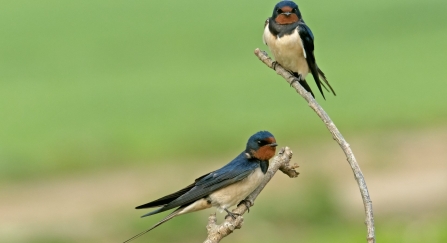By March, I am already scanning the skies on the off chance of an early Swallow passing over, and when I see the first arrival I am always overjoyed and can't wait to see groups of them gathering on the wires, hawking for insects over the fields and twisting and turning with speed and agility around the farm buildings.
My earliest ever Swallows were two years ago, on a blistery late February morning at the RSPB Goldcliff Reserve, where stood at the seawall two Swallows came past heading towards The Point, hugging the seawall as they passed. I remember saying to my friend, can you imagine their conversation? ‘why on earth did we come over now’?


